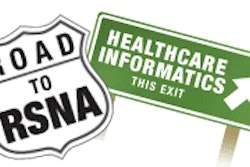A common belief in the medical community is that structured radiology reports are more efficient and effective at transmitting information than free-text reports. But when a pair of researchers recently put this maxim to the test, they discovered that both free-text and structured forms of radiology reporting are equally efficient and accurate for transmitting information.
"There were no significant differences in the three outcomes (score, time, and efficiency) between the free-text and structured-format conditions," wrote Dr. Chris Sistrom and Janice Honeyman-Buck, Ph.D., of the department of radiology at the University of Florida Health Center in Gainesville, FL, in the September American Journal of Roentgenology (AJR, Vol. 185:3, pp. 804-812).
In their study, Honeyman-Buck and Sistrom sought to determine what the effects of report format are, independent of content, on the efficiency with which medical personnel can read them and obtain information needed for patient care.
"In considering different options for report format, we believe that the choices made will affect the process of care in two distinct ways," the authors wrote. "First, during report creation, a predefined format may fundamentally alter the way that the interpreting physician thinks about the case as he or she produces the document. We call this reporting into structure. Second, during report review, the choice of different report formats may affect the way in which the reader comprehends the information. We call this reading structure."
The team's working hypothesis was that subjects would take significantly less time to read a structured report and answer questions about its content than they would with a free-text version.
To test their hypothesis, Honeyman-Buck and Sistrom selected radiology reports from their departmental archive of routine clinical examinations performed between January 2001 and December 2002. They selected four reports from each of three types: abdominal ultrasound, abdominal CT, and head CT without contrast.
The original 12 reports were in narrative (free-text) format; the authors created an additional 12 structured format reports on the basis of the free-text information. Each report was then assigned a series of 10 multiple choice questions with three to five options for the readers.
Six free-text and six different structured reports were reviewed and their questions answered in a single session by 16 senior medical students (five women and 11 men) who had passed their medicine and surgery clinical clerkships. The students used a Web-based testing system that allowed them to refer back to the reports as needed. At the completion of testing, 15 of the 16 students met with an investigator and filled out a questionnaire about radiology report format and content.
The authors noted that a medical student's experiences during training and practice lead to differences in many skills and habits.
"However, we argue that the simple ability to read a passage of text and comprehend its content is already well-established by the senior year of medical school," Sistrom and Honeyman-Buck wrote.
The students' scores on the cases ranged from 2 to 10, with a mean of 8.35 and a standard deviation of 1.52. Report format, order, or case type was not significant, according to Honeyman-Buck and Sistrom.
The time taken to complete the cases ranged from 30 to 707 seconds, with a mean of 351 seconds and a standard deviation of 108 seconds. Report format, order, and case type were not significant in the time it took the students to complete the cases, the researchers reported.
The investigators calculated efficiency as the number of correctly answered questions per minute. This ranged from 0.52 to 4.7, with a mean of 1.56 and standard deviation of 0.56. Again, the report format, order, and case type were not significant in the students' efficiency with the material. In all instances of score, time, and efficiency, there was no interaction between format and subject effects.
Honeyman-Buck and Sistrom did find a significant difference in the type of case when the students referred back to the report while answering questions.
"The mean number of times the report was consulted for abdominal CT (13.1) was essentially the same as for abdominal sonography (12.9)," the authors wrote. "However, for head CT, subjects went back to look at the report an average of 11 times."
In the post-test debriefing, the students expressed a clear preference, 73%, for a radiology report that was similar to a structured laboratory report. Only 20% preferred the radiology report in the narrative format.
"Despite the fact that they performed no better with the structured versions, our subjects clearly preferred it to the free-text format," the authors wrote.
Although the group preferred structured reports for radiology findings, when it came to the expression of uncertainty, their preference swung back to the narrative format. More than half, 53%, would prefer uncertainty to be expressed in words, 20% desired a semiquantitative scale, and only 13% wanted uncertainty expressed on a quantitative scale.
Interestingly, when asked how they would respond to an explicitly worded recommendation by a radiologist in the report, only 13% of the students responded that they would feel compelled to follow the recommendation. In fact, 20% responded that they would not feel compelled to follow the recommendation. The remaining 67% of the senior medical students indicated that they might be compelled to follow the recommendation.
On the basis of their initial study, Sistrom and Honeyman-Buck believe that free-text reports are not as difficult to read for content as some believe.
"The choice of report format and structure may be made on the basis of referring physician preference and considering the effect of reading into structure by radiologists," they wrote.
By Jonathan S. Batchelor
AuntMinnie.com staff writer
September 8, 2005
Related Reading
Speech recognition improves service to clinicians, June 5, 2005
Speech recognition drives more concise reporting, June 4, 2005
Radiology reports prone to language variability, June 3, 2005
Studies critique radiologists' reports in chest x-ray, knee MRI, April 19, 2005
European studies show SR has multilingual muscle, March 24, 2005
Copyright © 2005 AuntMinnie.com



















